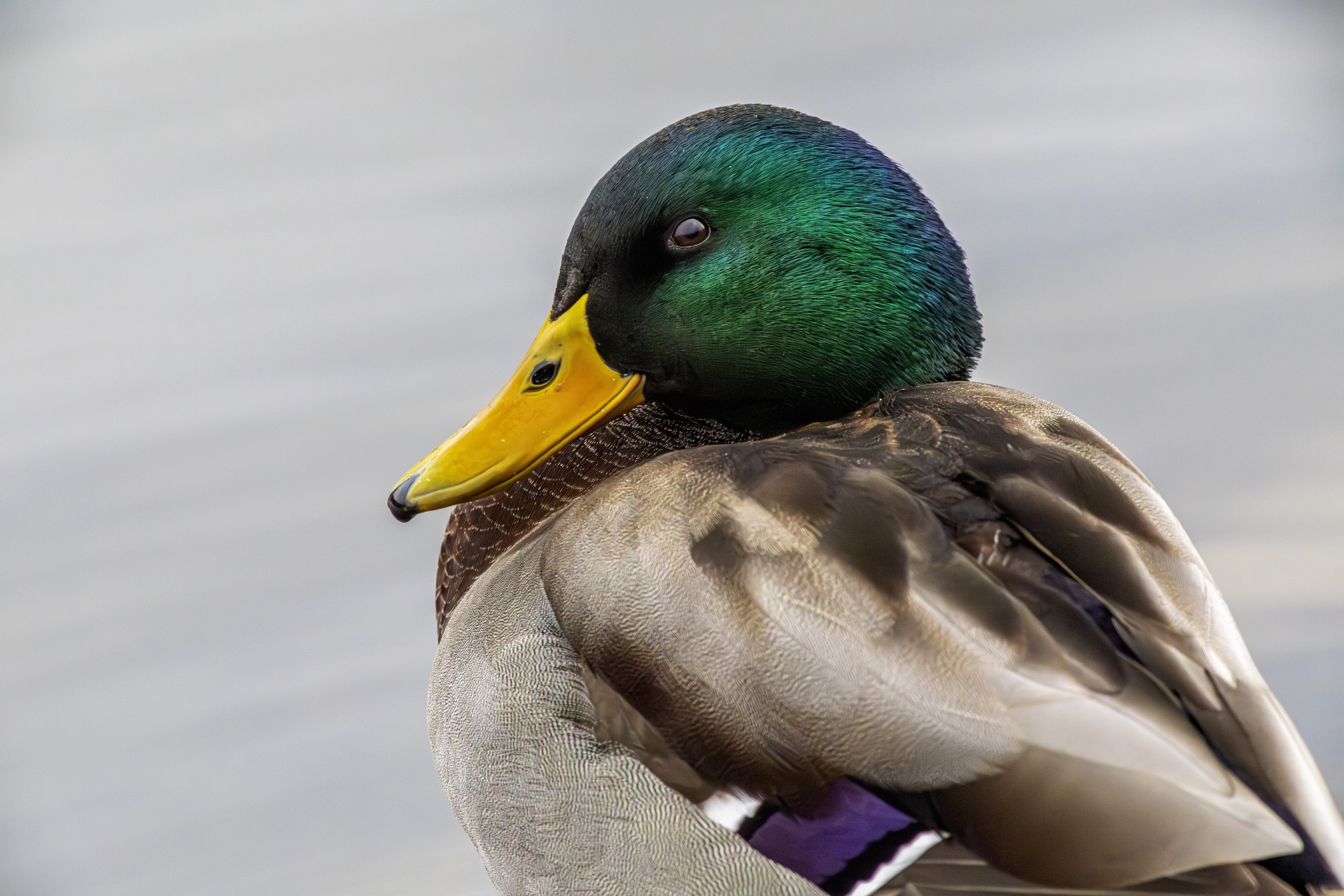Here’s a complete and detailed overview of the Mallard (Anas platyrhynchos) — one of the world’s most familiar and widespread wild ducks, often recognized as the ancestor of most domestic duck breeds.
🦆 Mallard / Wild Duck (Anas platyrhynchos)
Taxonomy
- Kingdom: Animalia
- Phylum: Chordata
- Class: Aves
- Order: Anseriformes
- Family: Anatidae
- Genus: Anas
- Species: A. platyrhynchos
Common names: Mallard, Wild Duck, Greenhead (male), Stock Duck
General Description
The Mallard is a medium to large dabbling duck and one of the most abundant and recognizable waterfowl species worldwide. Its striking sexual dimorphism (distinct male and female plumage) makes identification easy year-round.
- Length: 50–65 cm
- Wingspan: 81–98 cm
- Weight: 700–1,600 g
- Male (drake):
- Glossy green head
- White neck ring
- Chestnut-brown breast
- Grey body and black tail curl
- Yellow bill
- Female (hen):
- Mottled brown plumage for camouflage
- Orange bill with black markings
- Blue wing patch (speculum) bordered by white, shared by both sexes
- Eyes: Dark brown
- Legs: Orange-red
Distribution
The Mallard has one of the widest distributions of any bird species in the world.
- Native range:
- Europe, Asia, and North America
- Introduced:
- Australia, New Zealand, South Africa, and various oceanic islands
- Breeding range: Across temperate and subarctic zones of the Northern Hemisphere
- Wintering range: Migrates south to southern Europe, North Africa, South Asia, and Central America
Habitat
Mallards are extremely adaptable and occupy a wide range of wetland habitats, including:
- Lakes, rivers, and ponds
- Marshes and flooded meadows
- Estuaries and coastal lagoons
- City parks, ornamental ponds, and agricultural fields
They thrive near human settlements, often coexisting closely with people.
Behavior and Ecology
- Activity: Diurnal, but can feed at night, especially in urban areas.
- Social structure: Often in pairs during breeding, flocks in winter.
- Flight: Strong, fast fliers; capable of speeds up to 88 km/h (55 mph).
- Migration:
- Northern populations migrate south in winter.
- Temperate-zone birds often remain resident year-round.
Diet
A true omnivore and dabbling feeder, the Mallard feeds mainly at the water’s surface rather than diving.
- Natural diet:
- Seeds, aquatic plants, roots, and algae
- Invertebrates (insects, snails, crustaceans, worms)
- Small fish and amphibians occasionally
- In urban areas: Readily consumes grain, bread, and other human-provided foods, though this is nutritionally poor.
Reproduction
- Breeding season: March–July (depending on latitude)
- Courtship: Begins in winter; includes displays like head-pumping and synchronized calls.
- Nesting:
- On the ground near water, in tall grass or reeds
- Occasionally on rooftops or tree hollows
- Clutch size: 7–13 eggs
- Incubation: 26–30 days, by the female alone
- Ducklings: Precocial — leave the nest within 12–24 hours of hatching and follow the mother to water
- Fledging: 7–8 weeks after hatching
Lifespan
- Wild: Typically 5–10 years, though some individuals exceed 15 years
- Captivity: Up to 20 years
Predators and Threats
- Eggs and ducklings: Crows, magpies, foxes, raccoons, herons, large fish
- Adults: Foxes, eagles, hawks, owls, and humans
- Major threats:
- Habitat degradation
- Lead poisoning from spent ammunition
- Pollution
- Over-hybridization with domestic ducks
Conservation Status
- IUCN Red List: 🟩 Least Concern
- Population trend: Stable or increasing globally
- Estimated global population: >19 million mature individuals
Mallards are abundant and widespread, and in many areas their numbers are enhanced by urban feeding and mild winters.
Ecological Role
- Seed dispersal: By feeding on aquatic plants and spreading seeds through feces.
- Food web importance: A key prey species for many predators.
- Hybridization: Interbreeds readily with other duck species (e.g., Anas rubripes, Anas diazi), which can threaten rarer relatives genetically.
Identification Summary
| Feature | Description |
|---|---|
| Male head | Glossy green |
| Female color | Mottled brown |
| Bill | Yellow (male), orange-black (female) |
| Speculum | Blue-purple with white border |
| Tail | Upturned black curl in males |
| Call | Loud “quack-quack” (female); softer in males |
| Habitat | Lakes, ponds, rivers, wetlands, cities |
| Diet | Seeds, aquatic plants, invertebrates |
Interesting Facts
- The Mallard is the ancestral species of nearly all domestic ducks (except Muscovy).
- Only the female “quacks” — males produce softer rasping sounds.
- In urban environments, Mallards can become semi-tame and breed multiple times per year.
- They have been observed sleeping on one leg with half their brain awake — a behavior called unihemispheric slow-wave sleep.
- Hybridization with domestic ducks can produce colorful or odd-plumaged offspring, often seen in city ponds.
In Europe
- Common across Estonia, Finland, the UK, France, and Central Europe year-round.
- Migratory individuals arrive in southern Europe and North Africa during winter.
- A familiar sight even in urban parks, symbolizing adaptability and coexistence with humans.
Views: 969
Subscribe to the newsletter:
